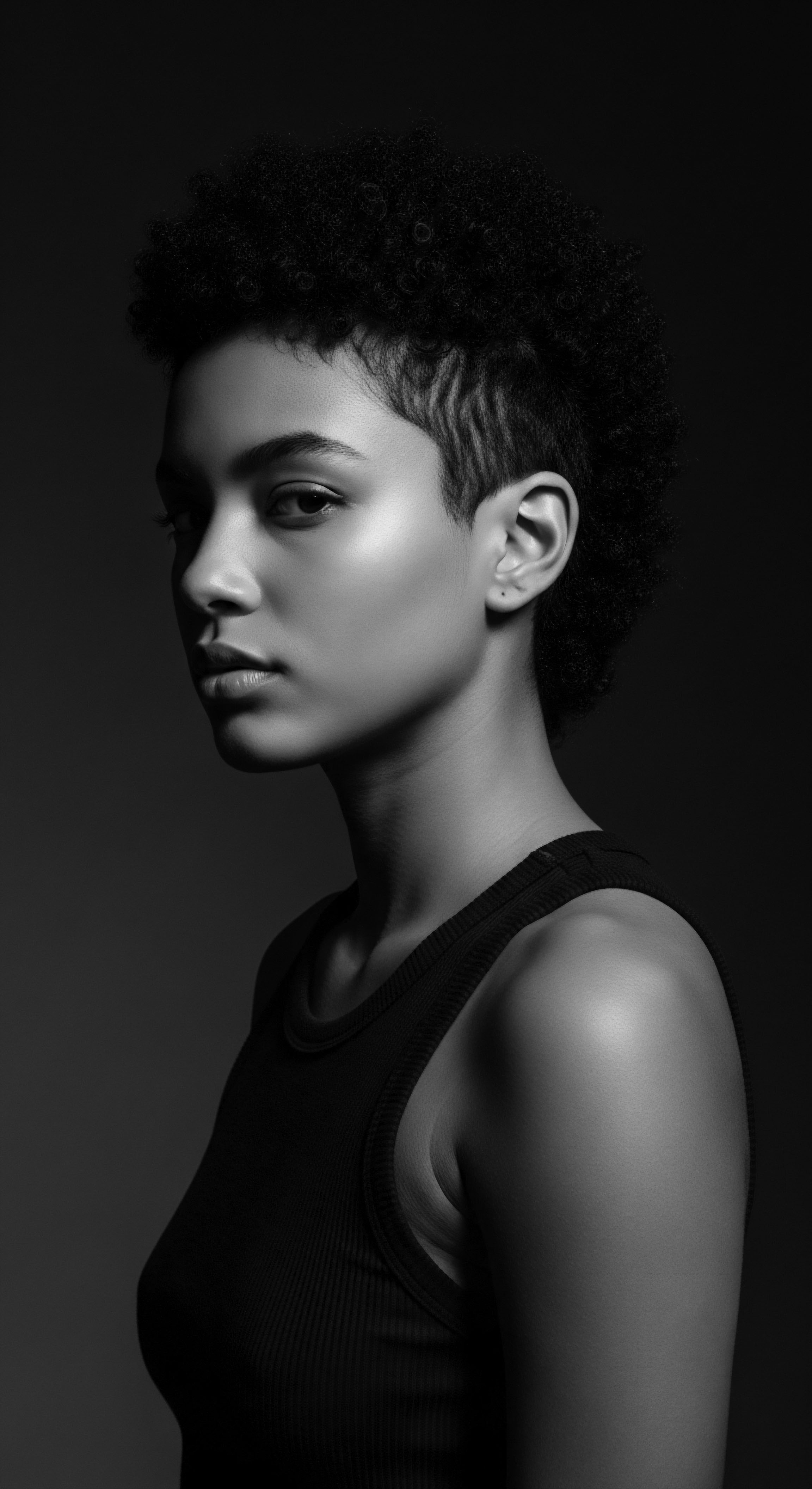
Fundamentals
The concept known as ‘Sleep Hair Rituals’ within Roothea’s ‘living library’ represents a collection of deliberate, nighttime practices meticulously observed to safeguard and nurture textured hair. This understanding extends beyond mere routine, embodying a profound commitment to hair health, preservation, and ancestral wisdom. Its core definition centers on the conscious actions taken before slumber to shield delicate strands from the friction, moisture loss, and tangling that can occur during hours of rest. These practices are a testament to the foresight of those who recognized the vulnerability of hair, particularly the intricate patterns of curls, coils, and waves, during the night.
For generations, communities with textured hair have understood the distinctive structural characteristics of their strands. The elliptical shape of Afro-textured hair, for instance, makes it inherently more susceptible to dryness and breakage when juxtaposed with straighter hair types. This inherent fragility, coupled with the natural tendency for knots and tangles, underscored the early adoption of protective measures. Sleep Hair Rituals, in their simplest form, are thus the strategic preparation of hair for its nocturnal repose, minimizing potential damage and ensuring a more harmonious awakening.
These rituals are not recent innovations. They are echoes from the source, ancient practices that have traversed continents and generations, adapting yet retaining their foundational purpose. The preservation of hair during sleep was a practical necessity, a means to prolong styles, conserve moisture, and reduce the labor of daily detangling.
It was also, for many, a quiet act of self-care, a moment of mindful attention to the crown that holds so much identity and history. The gentle winding of braids, the careful placement of coverings, each action carried a quiet power, a connection to the enduring spirit of hair care.
Sleep Hair Rituals are ancient practices of safeguarding textured hair during nocturnal rest, rooted in a deep understanding of its delicate nature and cultural significance.
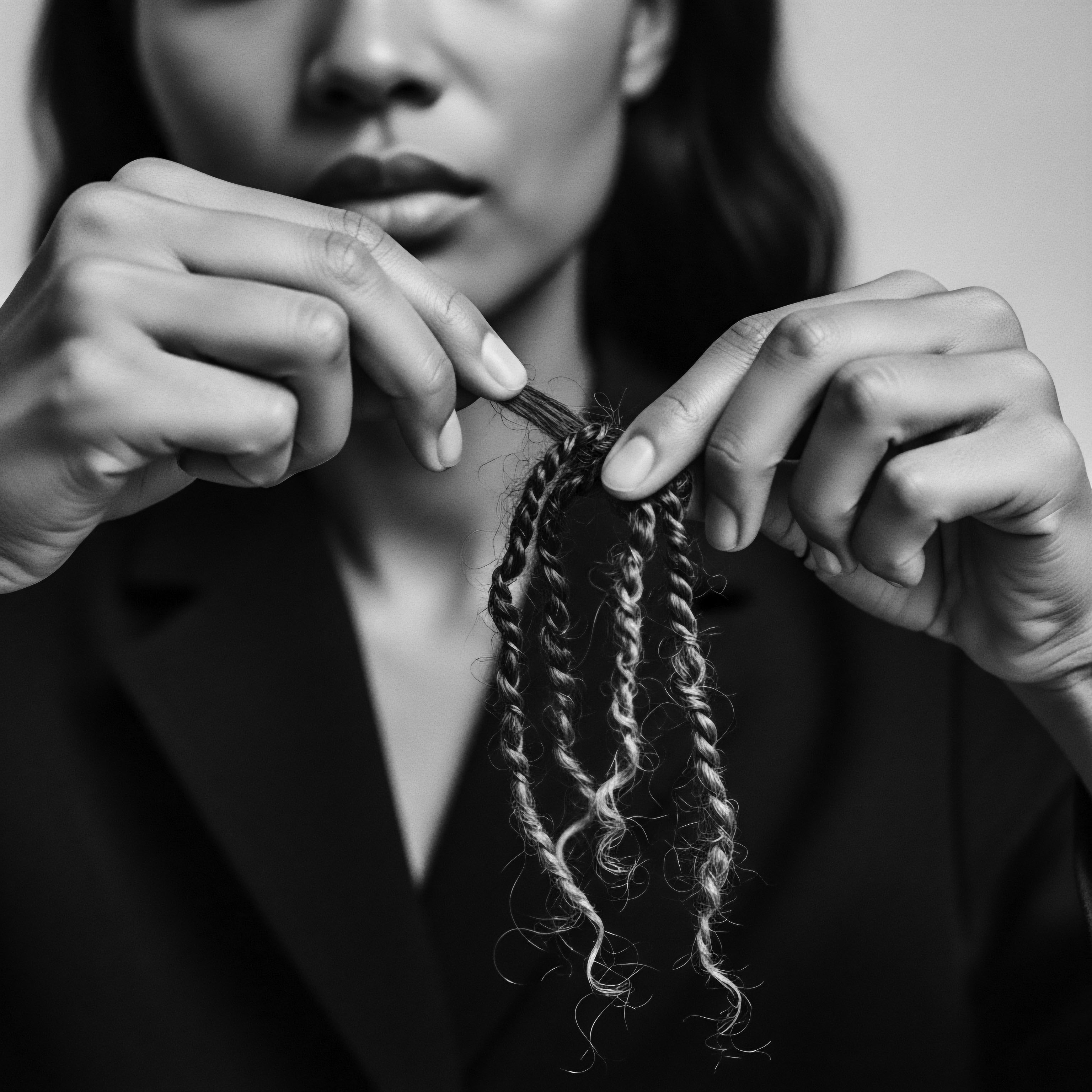
Historical Echoes of Nighttime Care
Across various African societies, the meticulous care of hair extended into the night. Before the advent of modern fabrics, natural materials were adapted to shield hair. Leaves, plant fibers, or carefully prepared cloths were used to wrap or bind hair, preserving intricate daytime styles and protecting against the elements. This early ingenuity speaks to a long-standing awareness of how environmental factors, even those within one’s sleeping space, could impact hair vitality.
The understanding of hair’s vulnerability during sleep was not confined to one region. Indigenous cultures worldwide, particularly those with hair textures prone to tangling or damage, developed their own methods. In some Native American traditions, the careful braiding and wrapping of hair, sometimes with animal furs or strips of cloth, provided protection from dirt and damage, suggesting a nighttime application of these principles to maintain hair’s integrity. This demonstrates a universal recognition of hair as a sacred aspect of self, requiring consistent, respectful attention.
- Headwraps ❉ Ancient African communities used headwraps for protection, to maintain hairstyles, and to signify social status or tribal affiliation, a practice that extended to nighttime preservation.
- Braiding ❉ Intricate braiding styles, known to have existed in North Africa since 3000 BC, served not only as social markers but also as practical means of securing hair, likely including for sleep.
- Oiling ❉ The application of natural oils, derived from indigenous plants, to the scalp and strands before rest, was a common thread across many traditional hair care systems to nourish and protect.
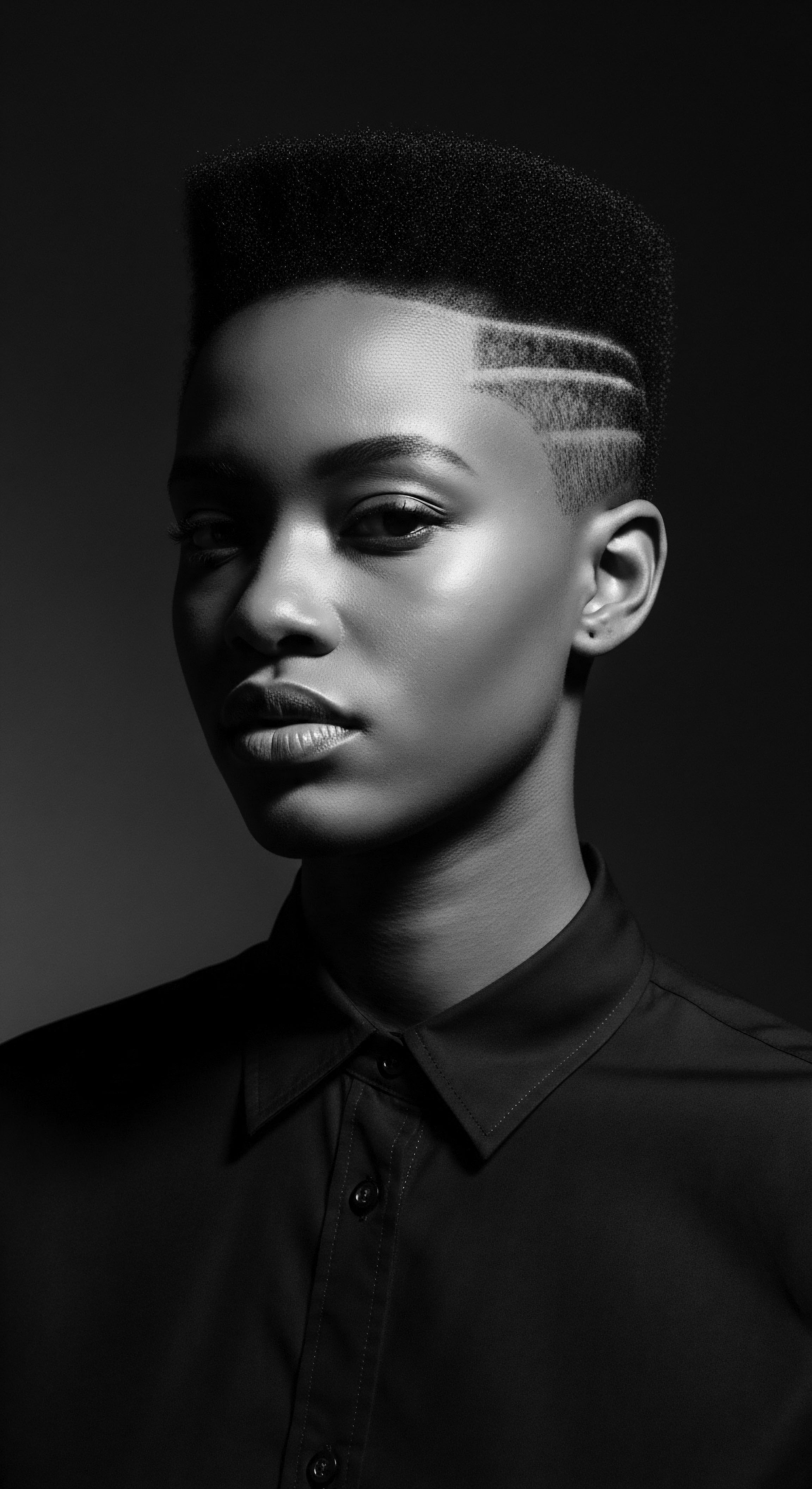
Intermediate
Moving beyond the foundational concept, the meaning of Sleep Hair Rituals expands to encompass a more detailed understanding of its physiological and practical implications for textured hair. This involves recognizing the specific vulnerabilities of curls, coils, and waves to friction and moisture loss, and how deliberate nighttime practices counteract these challenges. The hair shaft, with its unique structure, particularly in Afro-textured hair, possesses points of weakness that render it more fragile. Friction against common bedding materials, such as cotton, can exacerbate this fragility, leading to breakage, split ends, and frizz.
The absence of a protective barrier during sleep allows the hair’s natural moisture to be absorbed by absorbent fabrics, resulting in dryness and a compromised cuticle. Sleep Hair Rituals address this by introducing elements that create a gentler environment. This involves a shift from traditional cotton pillowcases to smoother surfaces, such as silk or satin, which allow hair to glide without resistance. The purposeful use of bonnets, scarves, or specific protective styles also acts as a physical shield, minimizing direct contact with abrasive surfaces and retaining vital hydration within the hair structure.
Nighttime hair protection for textured hair is a scientific application of ancestral wisdom, mitigating friction and moisture loss to preserve hair health and integrity.
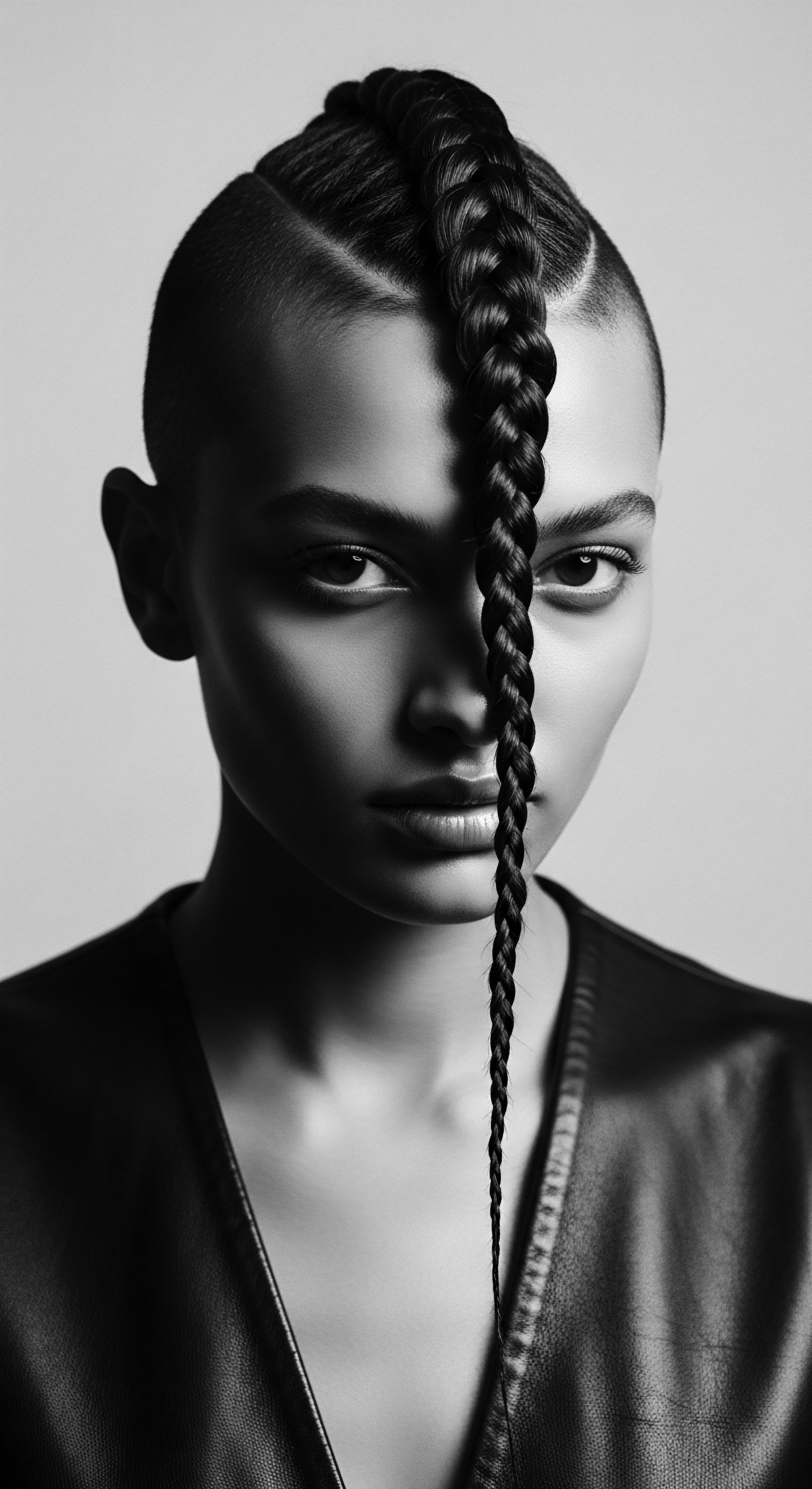
The Science of Nocturnal Preservation
The science behind effective Sleep Hair Rituals is rooted in tribology—the study of friction, wear, and lubrication. When textured hair, with its inherent coil and curl patterns, rubs against coarse fabrics, microscopic damage occurs. This constant abrasion can lift the hair’s cuticle, making it rough, dull, and prone to snagging.
Smooth fabrics like silk and satin significantly reduce this friction, allowing the hair cuticle to remain flat and sealed, preserving its natural luster and strength. Renee Gadar, Global Artistic Director (Texture) at Aveda, notes that cotton absorbs moisture, while satin, being fabricated, helps retain it, a critical distinction for textured hair types prone to dryness.
Beyond friction, moisture retention stands as a cornerstone of nighttime care for textured hair. Afro-textured hair, due to its unique curl pattern, makes it difficult for the scalp’s natural sebum to travel along the entire length of the hair shaft, contributing to its dryness. Applying nourishing oils or leave-in conditioners before bed, then securing the hair, creates a micro-environment that allows these treatments to penetrate deeply overnight. This intentional hydration combats the dehydrating effects of air and bedding, ensuring the hair remains supple and resilient.
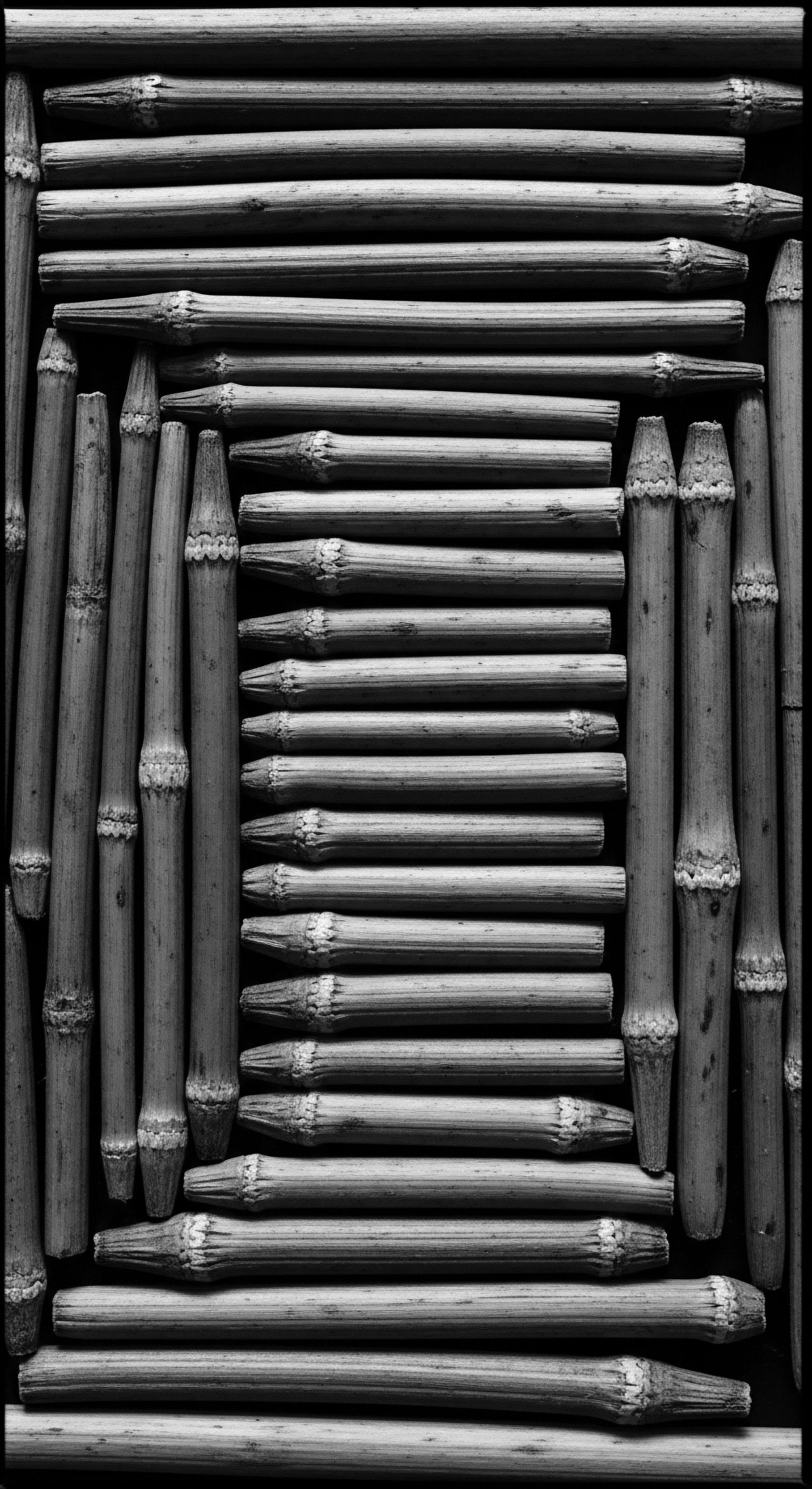
Protective Styling as a Nocturnal Art
Protective styles are a fundamental component of Sleep Hair Rituals, transforming the act of going to bed into a conscious decision for hair longevity. These styles, often inherited from ancestral practices, minimize manipulation and keep hair contained.
The choices of protective styles for sleep are diverse, each offering distinct advantages for different hair types and desired morning outcomes.
- Loose Braids and Twists ❉ These styles, particularly two-strand twists or chunky braids, prevent tangling and friction, simultaneously encouraging curl definition. They reduce the direct contact of individual strands with the pillow, minimizing breakage.
- Pineappling ❉ Gathering hair into a loose, high ponytail or bun at the crown of the head, secured with a soft scrunchie, preserves curl volume and shape without flattening. This method is particularly beneficial for those with looser curls or waves.
- Bantu Knots ❉ A traditional African technique, Bantu knots are small, coiled buns that can be used overnight to set hair into defined curls or waves without heat.
These techniques, when combined with satin or silk coverings, create a synergistic effect, safeguarding hair from the dual threats of friction and moisture loss. The thoughtful application of these methods represents a practical continuation of ancestral wisdom, adapted for contemporary living.
| Aspect Hair Covering Material |
| Traditional/Ancestral Approach Carefully prepared natural cloths, leaves, or plant fibers for wrapping. |
| Modern Adaptation & Scientific Link Silk or satin bonnets, scarves, and pillowcases. These materials significantly reduce friction and moisture absorption compared to cotton. |
| Aspect Protective Styles |
| Traditional/Ancestral Approach Intricate braids (e.g. cornrows, Fulani braids), twists, Bantu knots, often with cultural or social significance. |
| Modern Adaptation & Scientific Link Loose braids, two-strand twists, pineappling, or loose buns. These styles minimize tangling and stress on the hair shaft during movement. |
| Aspect Moisture Retention |
| Traditional/Ancestral Approach Application of indigenous plant oils and herbal infusions. |
| Modern Adaptation & Scientific Link Leave-in conditioners, hair serums, or light oils. These products provide a barrier against moisture loss and nourish strands overnight. |
| Aspect The enduring principle of protecting textured hair during sleep, passed down through generations, finds validation and refinement in contemporary understanding of hair science. |
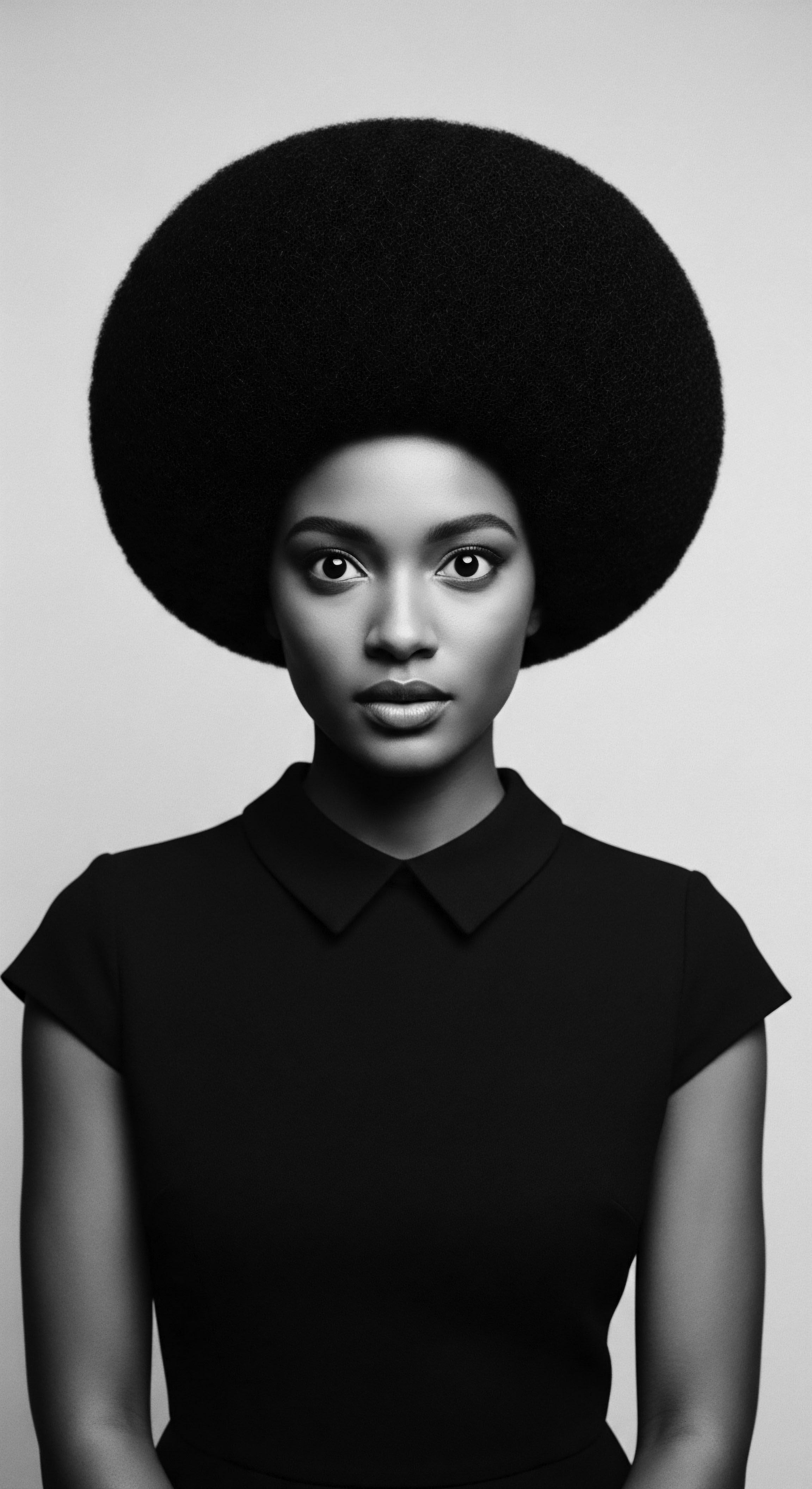
Academic
The ‘Sleep Hair Rituals’ transcend simple cosmetic practices; they constitute a profound cultural and biological phenomenon, particularly within the continuum of textured hair heritage. This concept represents the systematic, often ritualized, nocturnal safeguarding of hair structures susceptible to mechanical and environmental stressors, thereby maintaining trichological integrity and preserving intricate coiffures. From an academic vantage, its meaning extends to an intricate interplay of ancestral ethnobotanical knowledge, socio-historical adaptation, and contemporary dermatological understanding, all converging on the resilience and identity expressed through Black and mixed-race hair. The elucidation of Sleep Hair Rituals demands a multidisciplinary lens, examining its roots in pre-colonial African societies, its evolution under duress during the transatlantic slave trade, and its re-emergence as a symbol of self-determination in the modern era.
The intrinsic nature of Afro-textured hair, characterized by its elliptical cross-section and numerous twists along the shaft, renders it uniquely vulnerable to fracture at points of curvature. This morphological reality necessitates diligent care to prevent dehydration and mechanical damage. Sleep, a period of prolonged immobility and potential friction, poses a significant threat to hair health if not managed with intentionality.
Therefore, Sleep Hair Rituals, in their comprehensive interpretation, are preventative strategies, designed to minimize hair breakage and preserve moisture content, thus promoting follicular health and hair fiber longevity. This deep understanding, though articulated in modern scientific terms, mirrors the practical wisdom cultivated by ancestors over millennia.
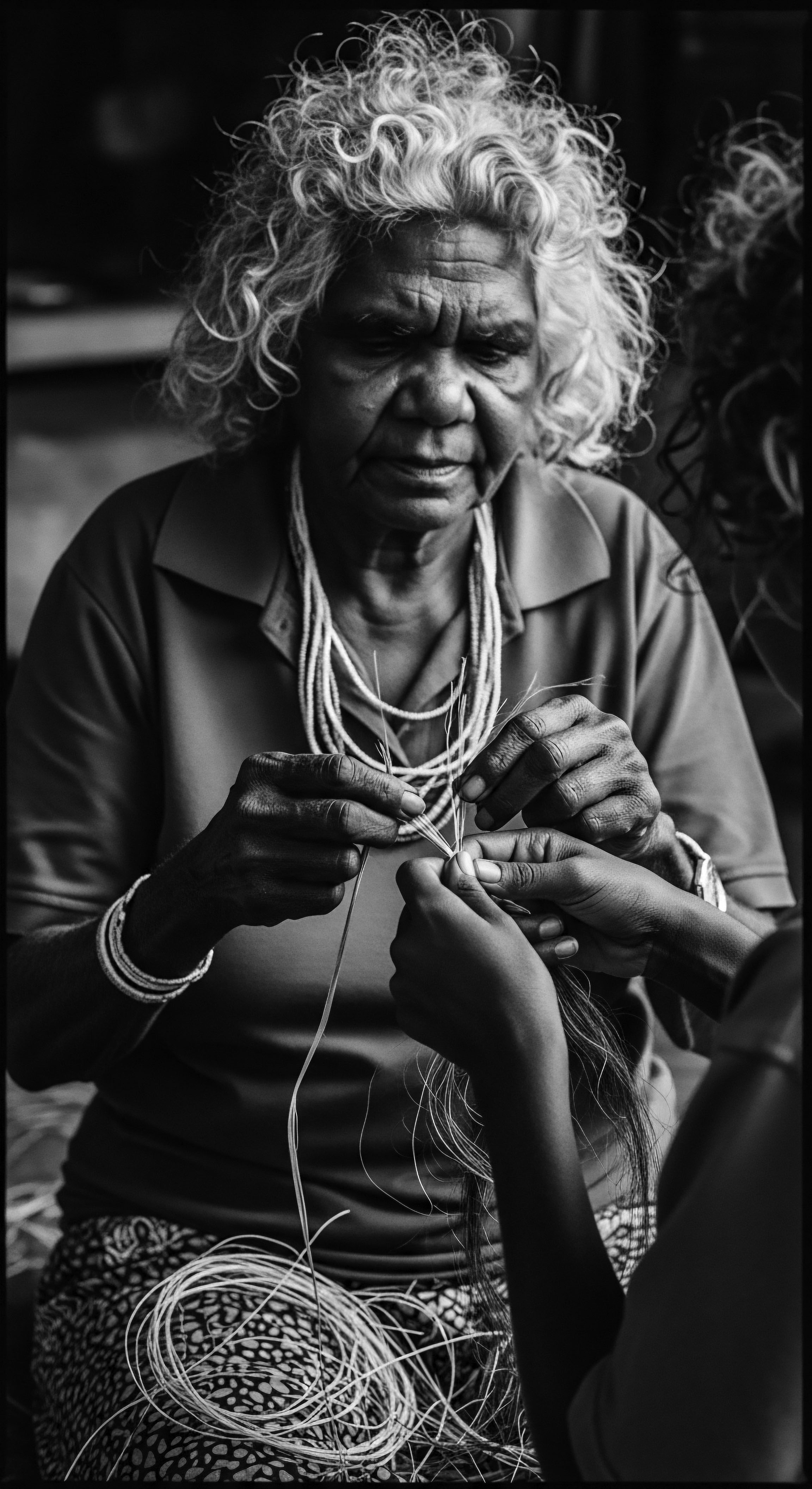
The Ancestral Imperative ❉ Hair as a Living Archive
Hair, for many African and diasporic communities, has always been more than mere biological outgrowth; it serves as a potent semiotic system, communicating social status, marital standing, tribal affiliation, age, and spiritual connection. The elaborate hairstyles, which often required hours, if not days, to construct, were not fleeting aesthetic choices. They were expressions of identity, community, and resistance, necessitating preservation, especially during sleep. The practices that constitute Sleep Hair Rituals thus emerge from an ancestral imperative to protect these symbolic expressions.
The historical trajectory of hair care among enslaved Africans in the Americas offers a particularly poignant case study of Sleep Hair Rituals as acts of defiance and cultural preservation. Stripped of their material possessions and subjected to brutal conditions, enslaved Black women found ingenious ways to maintain their hair heritage. While direct historical accounts detailing specific nighttime hair care routines during slavery are scarce, the widespread adoption of head coverings provides compelling evidence of a continuous effort to protect hair. For instance, the Tignon Laws of 1786 in Louisiana mandated that free Black women wear their hair bound in a kerchief or ‘tignon’ to visibly distinguish them and enforce a racial hierarchy.
Yet, these very symbols of oppression were subverted; Black women transformed the mandated headwraps into statements of elegance, artistry, and coded communication. This historical example underscores how a seemingly simple act of covering hair at night, or indeed during the day, was not merely practical; it was a deeply political and cultural statement, a means of maintaining dignity and community in the face of dehumanization. The persistence of headwrap usage for sleep today directly descends from this legacy, embodying centuries of adaptation and resilience.
Sleep Hair Rituals are not merely about hair health; they are a profound continuation of ancestral wisdom, acts of cultural preservation, and enduring expressions of identity for textured hair.

Interconnected Incidences ❉ Biology, Culture, and Mental Well-Being
The academic lens on Sleep Hair Rituals also examines the interconnectedness of hair biology, cultural practice, and psychological well-being. The constant policing of Black hair in professional and academic spaces, often deeming natural textures “unprofessional” or “unruly,” has a documented mental health toll, contributing to internalized racism, anxiety, and cultural disconnection. In this context, Sleep Hair Rituals serve as a private sanctuary, a space where individuals can nurture their hair without external judgment, reaffirming self-acceptance and connection to their heritage.
The meticulous care involved in nighttime hair preparation, from detangling with wide-tooth combs to applying specific oils and securing hair in protective styles, represents a form of embodied knowledge passed down through generations. This knowledge often validates modern scientific understanding of hair care. For example, the ancestral practice of oiling the scalp and strands before bed aligns with contemporary dermatological recommendations for moisture retention in Afro-textured hair. This convergence of ancient wisdom and modern science highlights the profound efficacy embedded within these rituals.
Moreover, the choice of materials for nighttime protection, such as silk or satin, reflects an intuitive understanding of material science. These fabrics, with their smooth surfaces, minimize the mechanical stress that cotton can impose on hair. This reduces the likelihood of developing conditions like traction alopecia, a form of hair loss common among those with textured hair due to prolonged tension or friction. The continuation of these rituals today is a testament to their effectiveness, not only in preserving hair, but also in preserving a sense of self and connection to a rich cultural lineage.

The Long-Term Consequences and Insights
The sustained practice of Sleep Hair Rituals yields long-term benefits that extend beyond immediate hair health, impacting overall well-being and cultural continuity. Chronically neglected hair, particularly textured hair, can lead to increased breakage, stunted growth, and a heightened risk of scalp conditions. Conversely, consistent nighttime protection contributes to improved hair length retention, enhanced moisture balance, and reduced need for frequent, potentially damaging styling.
A study exploring the subjective well-being of older Black women in the UK, for instance, revealed that transitioning from chemically relaxed to natural hair often improved confidence and well-being. This transition frequently involves the adoption of more diligent care routines, including nighttime protection, as a means of embracing and maintaining natural texture. The act of engaging in these rituals becomes a daily affirmation of identity, a quiet rebellion against historical pressures to conform to Eurocentric beauty standards. The investment in protective styles, which often extend to sleep care, is also framed as an investment in mental health for Black women, connecting them to centuries-long traditions of self-care.
The insights derived from the enduring practice of Sleep Hair Rituals reveal that hair care, for textured hair communities, is never merely superficial. It is a deeply embedded cultural practice, a form of self-preservation, and a powerful statement of identity. The longevity of these rituals, despite centuries of systemic discrimination and attempts to erase cultural practices, speaks to their inherent value and the resilience of those who uphold them. This continuous thread of care, passed from elder to youth, ensures that the ‘Soul of a Strand’ remains vibrant, protected, and deeply connected to its heritage.
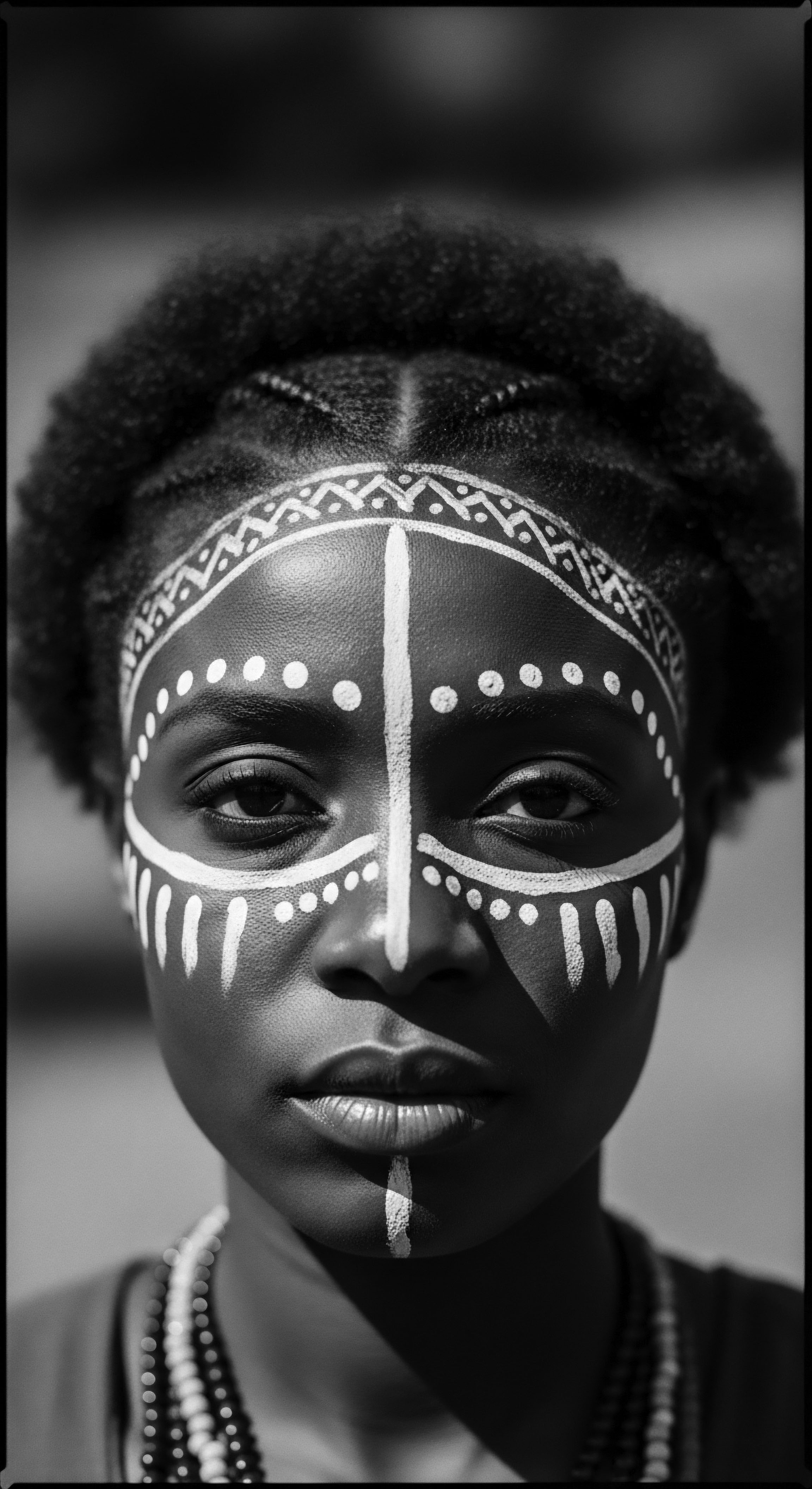
Reflection on the Heritage of Sleep Hair Rituals
The exploration of Sleep Hair Rituals, from their elemental biology to their academic complexities, reveals a profound meditation on textured hair, its heritage, and its care. These practices are not static remnants of a bygone era; they are living traditions, breathing with the wisdom of countless generations who understood the intimate connection between hair and spirit. The very act of preparing one’s hair for sleep, whether through intricate braiding, the gentle application of oils, or the soft embrace of a silk bonnet, is a quiet conversation with ancestors, a whispered affirmation of continuity.
The journey of Sleep Hair Rituals from the communal hearths of ancient Africa to the contemporary bedrooms of the diaspora traces a remarkable path of adaptation and resilience. Each twist, each wrap, each carefully chosen fabric carries the weight of history, the stories of survival, and the triumphs of identity. It is a testament to the enduring ingenuity of Black and mixed-race communities, who, despite adversity, maintained and evolved practices that protected not only their physical strands but also their cultural soul.
The ‘Soul of a Strand’ ethos finds its clearest expression in these nocturnal rites. It is a recognition that every curl, every coil, every wave holds within it a lineage, a narrative of strength and beauty that refuses to be silenced. The dedication to preserving hair during its most vulnerable hours is an act of profound self-love, a honoring of the crown that serves as both a personal adornment and a communal emblem. As we continue to understand the science that validates these ancient ways, we deepen our reverence for the wisdom that has always been present.
The future of Sleep Hair Rituals lies in this harmonious blend of tradition and discovery. It is about celebrating the ancestral knowledge that laid the groundwork, while also embracing contemporary insights that refine and enhance these practices. This continuous dialogue ensures that the legacy of care remains vibrant, a beacon for future generations to connect with their hair’s rich heritage, finding solace, strength, and an unbroken connection to the past within each cherished strand.
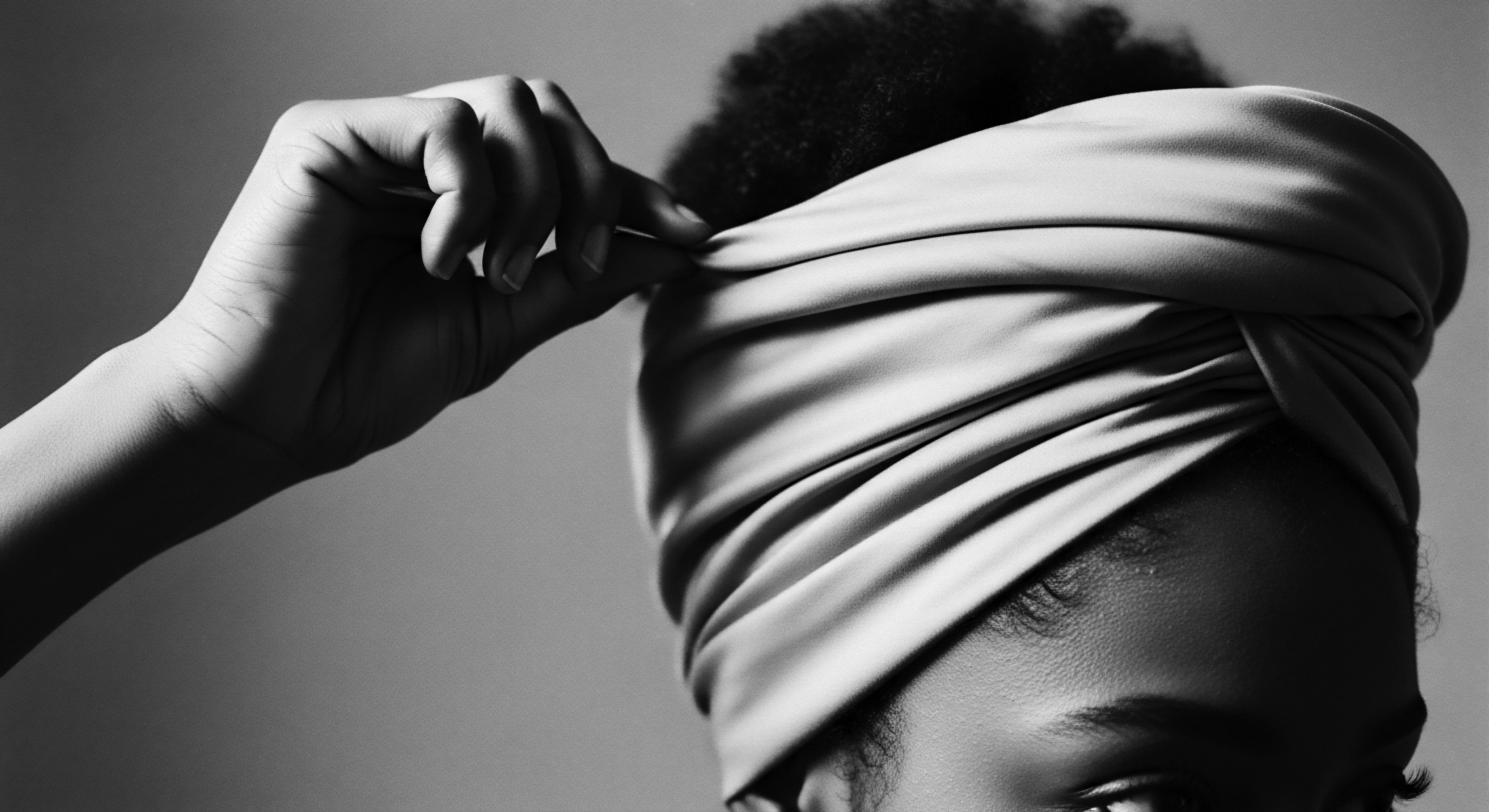
References
- Ayana D. (2001). Hair Story ❉ Untangling the Roots of Black Hair in America. St. Martin’s Press.
- Chaves, R. (2019). Hair, History, and Healthcare ❉ The Significance of Black Hairstyles for Dermatologists. VisualDx.
- Dawson, M. & Karl, K. (2018). The Social and Psychological Impact of Hair Discrimination. Journal of Applied Psychology.
- Donaldson, S. (2022). The Significance and History of Bonnets. Byrdie.
- Forbes, C. & Odugunwa, O. (2022). Crowned ❉ The History of Black Hair. Byrdie.
- Gordon, M. (2018). Hair in Ancient African Civilizations. Journal of Pan African Studies.
- Jacobs, A. & Kelemi, C. (2020). Hair Relaxing and Self-Esteem in Black Women. Journal of Health Psychology.
- Mbilishaka, A. (2018). PsychoHairapy ❉ A Ritual of Healing Through Hair. Psych Central.
- Mbilishaka, A. et al. (2020). The Influence of Older Women on Younger Persons’ Hair Choices. Journal of Black Studies.
- Peacock, T. N. (2019). African American Hair and Beauty ❉ Examining Afrocentricity and Identity Through the Reemergence and Expression of Natural Hair in the 21st Century. Master’s thesis, University of South Carolina.
- Rowe, K. (2019). Connecting with Heritage ❉ Black Hair and Community. California State University, Fullerton.
- White, S. & White, G. (1995). Slave Hair and African American Culture in the Eighteenth and Nineteenth Centuries. The Journal of Southern History, 61.
